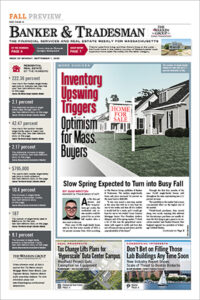Boston planning officials gave their OK to a major rezoning of Charlestown’s industrial areas Thursday night, the penultimate step in paving the way for major commercial and residential growth around the neighborhood’s subway stops.
The changes detailed in the Boston Planning & Development Agency’s PLAN: Charlestown would add capacity for hundreds of thousands of square feet of development, with towers up to 280 feet clustered near Interstate 93 and the Orange Line. But developers looking to take advantage of the plan’s blueprint for greater height and density will still have rely on planned development areas processes, BPDA planner Astrid Walker-Stewart told a meeting of the agency’s board Thursday, to preserve the city’s leverage in extracting a range of public benefits like playing fields and other upgrades.
One of the biggest changes to PLAN: Charlestown from draft to final form was the removal of the Bunker Hill Mall from areas eligible for denser development. BPDA Director of Planning Aimee Chambers said that “advocacy from elected officials” resulted in that suburban-style strip mall being relegated to a different zoning district aimed at preserving the scale of the neighborhood’s current commercial nodes.
Following their approval by the BPDA board Thursday, zoning articles implementing PLAN: Charlestown now move to the city Zoning Commission before they are written into law, ending an extensive, four-year planning process.
However, it’s possible Charlestown political leaders may seek to block the plans there or try use future PDA processes to put downward pressure on new developments’ size. Both Charlestown state Rep. Dan Ryan and City Councilor Gabriella Colletta, who represents Charlestown, the North End and East Boston, voiced strong opposition to the height and density allowed under PLAN: Charlestown. A representative from at-large City Councilor Erin Murphy’s office said Murphy likewise does not support the plan.
“The overall increase in height and density are too much for Charlestown to responsibly accomodate with its limited infrastructure,” Colletta said, calling the added development “undeniably burdensome” and casting doubt on whether transit upgrades, like dramatic increases in frequencies planned for the neighborhood’s two MBTA bus lines or the Orange Line would ever materialize.
Ryan urged residents opposed to PLAN: Charlestown to use future development approvals processes for projects between Rutherford Avenue and Interstate 93 to rein in proposed building heights due to the additional road traffic he said new development could generate.
BPDA staffers told the agency board, in response to doubts about the arrival of better transit infrastructure, that both major projects have been fully funded by the MBTA, even if they are proceeding slowly.
The board also approved a controversial residential tower Thursday night that saw its height cut substantially during its approvals process, which paralleled the final stages of PLAN: Charlestown’s development.
The One Mystic tower, proposed by Fulcrum Global Investors at 279 feet tall with 636 apartments, was approved at 280 feet tall and 503 apartments for a former junkyard a stone’s throw from the MBTA’s Sullivan Square subway and bus hub. Stantec architect Aeron Hodges, the project’s lead designer, said the development team was “hoping to set an example for all the new buildings coming to this neighborhood” thanks to the building’s Passive House design, 100 affordable housing units, improvements to pedestrian and cyclist infrastructure in Sullivan Square it would pay for and the design’s use of permeable pavers and other stormwater mitigation tools.
Donald West, Fulcrum’s representative at Thursday’s meeting, said construction could begin in about a year once construction drawings are finished.
Also approved: developer RISE’s 40 Roland St. lab-and-apartment development, which will bring over 750,000 square feet of lab space and 126 apartments to a cluster of properties on the Boston-Somerville line, on the far side of I-93 from most of the rest of Charlestown.
Lastly, the board OK’d a second notable zoning change: making childcare facilities a conforming use in every Boston neighborhood. Until this measure is also approved by the city Zoning Commission, new childcare facilities need approval from the Boston Zoning Board of Appeal. Mayor Michelle Wu’s administration sought the change as a way to ease the creation of more childcare facilities, particularly in neighborhoods with a high need for them, as part of a larger drive to make Boston more family-friendly.







